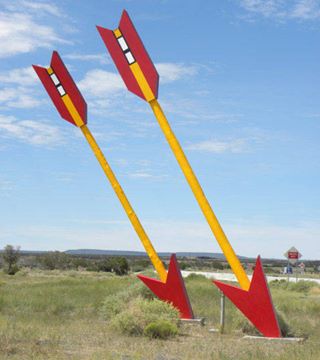US Hwy 66... is it worth driving it?
The "End of the Trail" sign on Santa Monica Pier
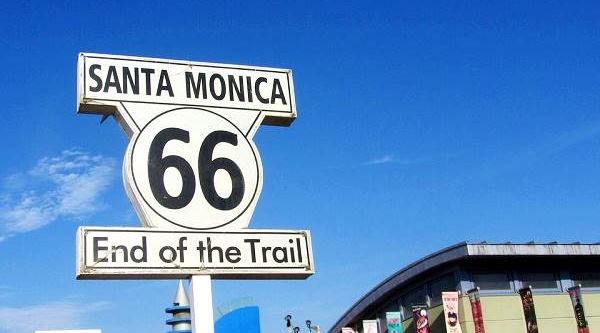
Cons, the negative aspects of a Route 66 trip
Is Route 66 overrated?
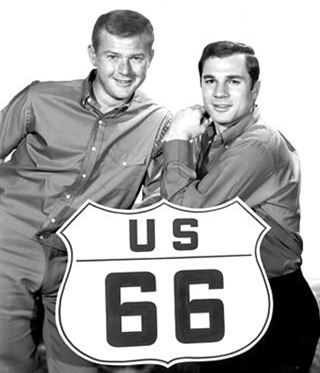
Martin Milner and George Maharis of the early 1960s TV series "Route 66".
Some Route 66 Facts
US Highway 66 runs across America from East to West and is an icon of American culture not only in the US, but also abroad.
Scores of travelers from all over the world come to the States specially to embark on a road trip along the "Mother Road".
For some it is an adventure that has been on their bucket list for years and they can hardly wait to do it.
It is a symbol of America, American culture and values, a journey into the nostalgic years of their childhood, into the America portrayed on movies and TV series...
Yet some people have doubts and wonder if it is really worth the while. After all, travel is expensive.
So let's try to clarify the situation; we will point out its cons, and the pros; let's hear both points of view:
The Cons: Route 66 isn't worth it
From the point of view of a route 66 detractor, you are better off taking your vacations elsewhere, and getting better value for your hard earned dollars.
Is Route 66 one of the most overrated roads in the World?
Boring and unremarkable
If you consider the highway itself it is probably overrated: most of its surviving sections are a regular two lane highway that runs straight and flat across the plains of Illinois, western Missouri, Kansas, Oklahoma and Texas (see the pictures below).
These detractors will also say, that to make matters worse, many parts of the original alignment are buried beneath the Interstate (which is not exactly true).
And it only corsses exciting scenery in the Missouri Ozarks and its Southwestern segments of New Mexico, Arizona and California.
These lonely stretches of highway are poorly maintained have an overall unkempt appearance are dotted with small towns that have seen better times.
Long straight and empty stretches of Route 66
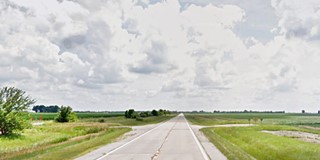
Route 66 crossing the farms on the Illinois prairies
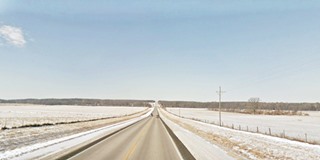
Route 66 in western Missouri
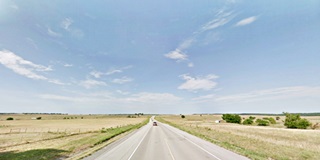
Straight and level Route 66 in Oklahoma farmland
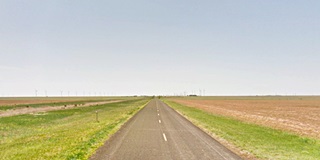
Level fields and a straight Route 66 in Conway, Texas
Route 66 lacks the grandeur of other American scenic highways (think Big Sur State Hwy 1 in California, or Utah's Scenic Byway 12) it is a run-of-the-mill unremarkable road.
Ghost Towns and sad remnants of its former glory
The Mother Road is lined with derelict buildings, abandoned gas stations and sad diners from a bygone era. It is dotted with ramshackle houses with flaking paint.
It makes one wonder... Was this one of America's main throughfares? What is its allure?
Abandoned Route 66 Gas Station, covered with graffiti, close to San Fidel NM
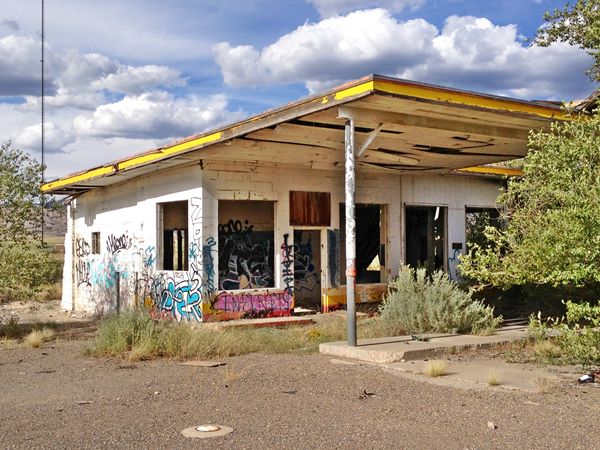
Summing up the Cons
So, a Route 66 detractor feels that a Route 66 road trip won't be worth it.
In all honesty, it isn't a cheap trip: you have to get to Route 66 in the first place (a costly flight for oversea visitors) and then there is the car hire (if you come from abroad).
To this you have to add the gas prices, accommodations, food, meals, tickets for some attractions; it all ads up.
The expense may not justify the experience.
And don't forget about the long drive; hour upon hour behind the wheel, upon an uncertain itinerary, at a slow pace on a two lane highway or even slower driving through one-horse towns.
A view of vintage cars, a Route 66 diner, and gas station in Glenrio
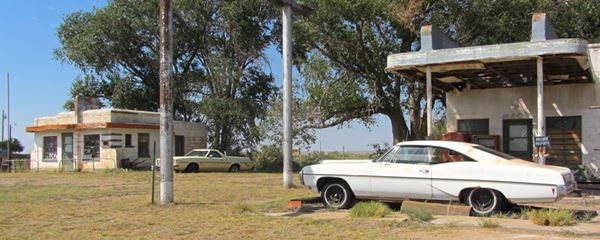
The Pros: definitely do it, it is the trip of a lifetime
We are convinced that the trip is worth doing. And we will give you very good reasons to drive Route 66.
Yes, it is Worth it!
There are many good reasons that make driving Route 66 a worthwhile experience, we will only list five of them below
Five Good Reasons to take a Route 66 Road Trip
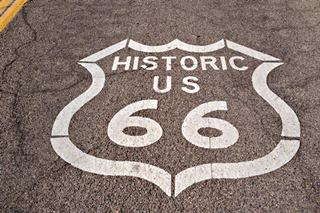
Route 66 shield painted on the Pavement, Kingman
A. Whittall
1. It is an Epic Adventure
Just driving across the US from Chicago to Santa Monica is an adventure in itself.
The sheer length of Route 66 sets it apart from any run of the mill road trip.
It was 2,448 miles long when it was commissioned in 1926 and 2,238 miles in 1960 (3.939 and 3.601 km respectively), this is impressive; to put it in perspective, it is more or less equivalent to:
- Driving from London, UK to Moscow, Russia via Berlin, Germany; Warsaw, Poland; Helsinki, Finland, St. Petersbourg, Russia: 2,382 miles.
- Driving from Glasgow, Scotland to Istambul Turkey: 2,308 miles.
- As the crow flies, Route 66 is equivalent to the distance between San Francisco to Honolulu, US (2396 miles) or across the Atlantic from London UK to St. Johns,Canada (2,360 mi.).
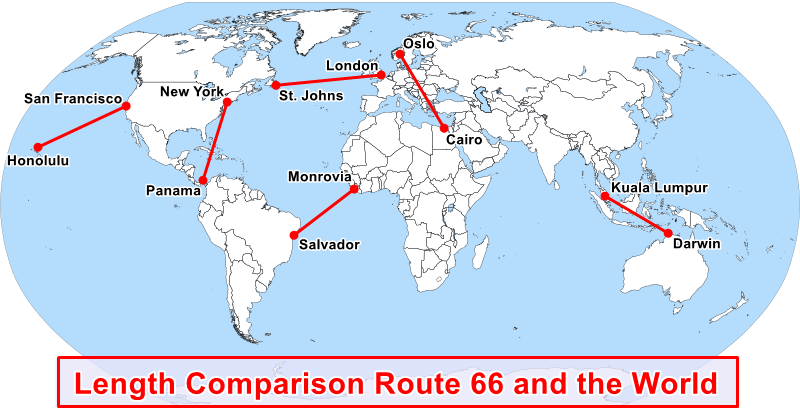
2. Small Town America is Alive and Kickin'
The road trip will give you a chance to see the small towns of "Real America". Nowadays the Interstate system bypasses them and you only get to see them from afar.
The freeway is just a funnel for traffic, moving goods and people quickly from one place to another. Their exit services are just a pitstop for those zipping past the small towns: gas stations, fast food restaurants and standard motels of national chains are all the same ones at each exit.
They are the result of the "one size fits-all" approach with a standardized design across the country (and the world!).
Small town America on the other hand offers diversity, slow paced communities that are safer and friendlier than the big cities.
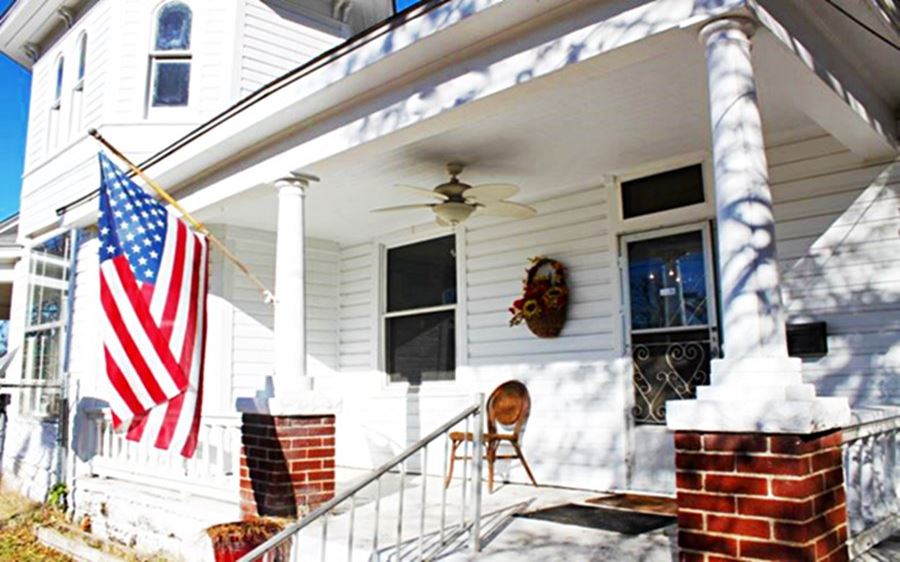
Conservative, the last bastions of old-school patriotism and individuality, they embody the spirit that made America great.
As you drive along Route 66 it becomes the Main Street of many of these small towns, where permanence is the norm: change takes place slowly -even though national fast food chains and discount stores are making inroads.
This sense of permanence and stability is welcome in our constantly changing modern world. Below is Virden, on the 1926-30 Route 66 segment in Illinois, same place hardly any changes...
North side of Square 1950s in Virden, Illinois
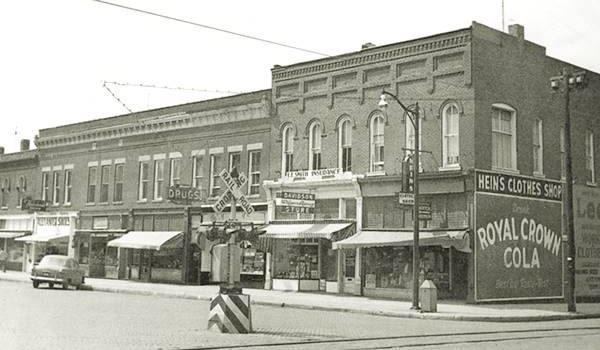
The same spot today... virtually unchanged:
North side of Square nowadays. Virden, IL

Even though many of these small towns are fighting to keep alive as their bright youngsters search for opportunities elsewhere, people are moving back into small town America, running away from the anonimity, insecurity and harshness of the large coastal urban sprawls.
3. A Journey into American History
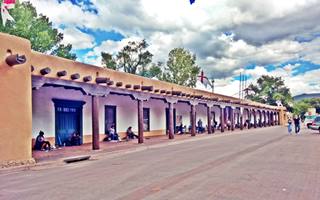
Palace of the Governors built 1610, Santa Fe NM : The oldest continuously occupied public building in the U.S.
Austin Whittall
Route 66 was aligned along trails trodden by the first people to live in America, they were later improved, widened and straightened out.
A journey along the Mother Road follows the footsteps of thousands of Americans across the continent.
Some examples:
Monks Mound, Route 66 to the lower left of the image, Collinsville, Illinois
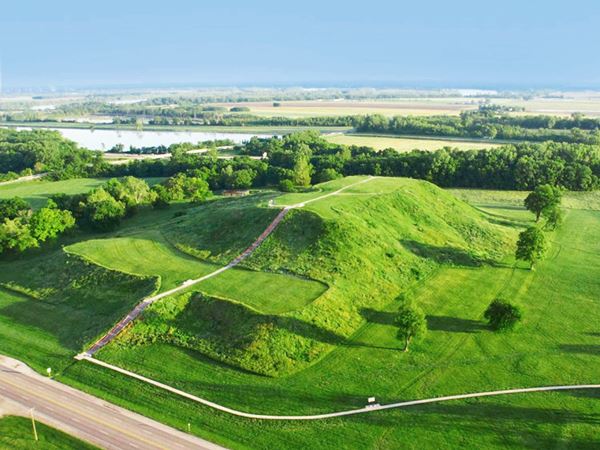
- The ancient native Cahokia Mounds in Collinsville IL, a UNESCO World Heritage Site and Mitchell IL mounds site.
- The Native American foot trails or "traces" (like the Old Indian Trace in Elkhart IL) used by Indians during millennia and then by French trappers in the 1700s, pioneers in the early 1800s. By the mid 1800s the railway and the roads that would become US 66 had replaced it.
- Routes of forced migration like the Trail of Tears used by displaced Native Americans forced to leave their homeland in the East for reservations in Oklahoma. The trail crosses Missouri, US 66 follows it.
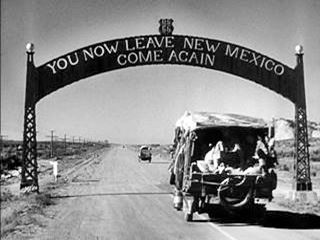
The Gateway Arch at New Mexico - Arizona state line on Route 66. From The Grapes of Wrath (1940) Read more at out Lupton Arizona page
- The Spanish colonial roads: Santa Fe Trail and the Camino Real in New Mexico, built in the early 1700s to link the region with the Spanish territory on the Mississippi and with Mexico.
- The Native American Mojave Trail used by the Spaniards since 1776 to cross the Californian desert. The Mormons and pioneers followed it into California in the 1850s. (Mormon Trail).
- The transcontinental Atlantic & Pacific Railroad followed these trails to reach Los Angeles in 1885.
- The Great Depression and the Dust Bowl drought forced thousands of Midwestern farmers to give up their land and flee west in the 1930s. They did so by driving along Route 66 to find a new future and jobs in California.
This is protrayed in the novel The Grapes of Wrath written by Nobel prize winner John Steinbeck, which John Ford made into a movie in 1940, winning an Oscar as best director. - After World War II millions of men came back home from the battlefields and they remembered their training days in the balmy Southwest so they moved there abandoning the freezing winters of the Northeast.
One of those former soldiers was ex-Marine captain Robert William Troup Jr., "Bobby" Troup, who penned the hit Route Sixty-six (of "Get your kicks" fame) while riding along Route 66 between Chicago and L.A. in 1946 - During the 1950s and 60s the mobile and increasingly affluent American middle class would drive the highway on vacations seeking thrills and adventures.
All of this came to an end when the Interstate replaced US 66, straighter and safer -and more boring too!. People now fly across America. The world had changed.
4. Experience Americana & Route 66 Kitsch an Quirky
Elvis Presley is alive in Williams Arizona!

Americana
Americana is a word that means "American culture", "things typical of America", its culture, its civilization.
Route 66 gives you the chance to gain a deeper understanding of those things that make America what it is.
International visitors just love it: soda fountains, diners, real American food, the music playin on the radio... experience first hand things that they've seen on TV and in the movies.
A Route 66 road trip is a journey into the fabric of American culture.
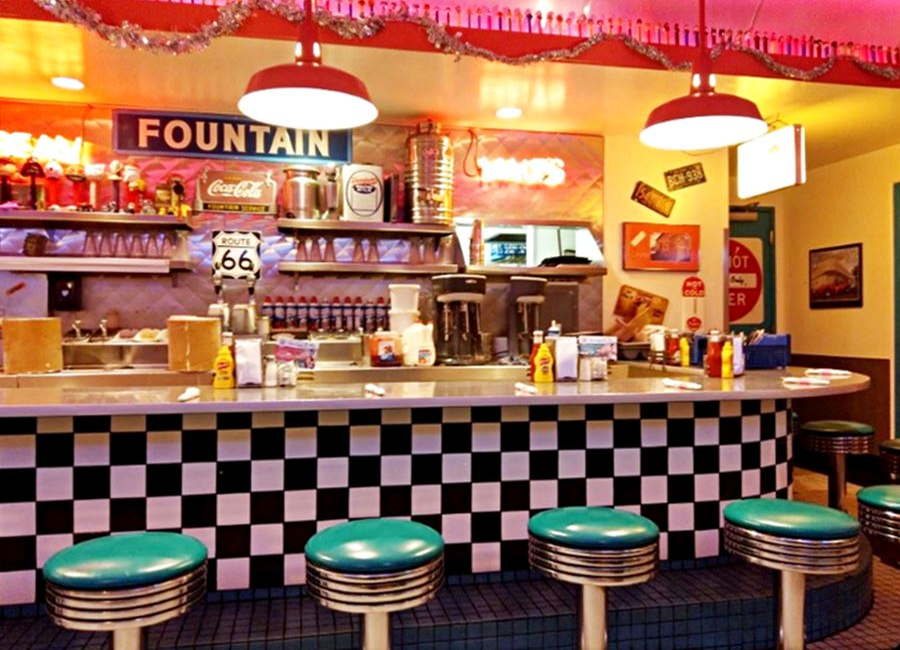
Wacky and Quirky Sights on Route 66
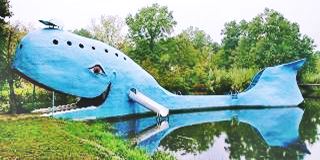
Blue Whale in Catoosa, Carol Highsmith
We use the word Kitsch in the sense of objects that are overdone, garish, glaring, nostalgic and that despite their questionable aesthetic value appeal to the popular taste.
As travellers hit the highways all across America, Mom and Pop stores, motels and diners competed with each other to lure in their customers. Kitschy neon signs, billboards and gigantic animals and persons, teepees and covered wagons vied for attention. They were designed to be inspiring and eye-catching.
Some have survived along Route 66 and you can still see them in their over-bright and showy grandeur: We mention just one in each state, except Kansas, which was more sedate in its advertising.

Tee-Pee Curios neon sign, Source. Click for street View
- Muffler Man Holding Hot Dog (Atlanta IL)
- The World's (second) Largest Rocking Chair (Fanning MO)
- Blue Whale (Catoosa OK)
- Big Texan Steak Ranch (Amarillo TX)
- Teepee Curio Shop (Tucumcari NM)
- Historic Wigwam Motel (Holbrook AZ)
- Giant Orange (Fontana CA )
- World's Tallest Gas Pump (Sapulpa OK)
- Historic Largest Catsup Bottle in the World (Collinsville IL)
- Giant Bowling Pin (Buckhorn MO)
- The World's Largest Totem Pole (Foyil OK)
- Giant Cross (Groom TX)
- Twin Arrows Trading Post (Twin Arrows AZ)
- Bottle Tree Ranch (Helendale CA)
- Chicken Boy (Los Angeles CA)
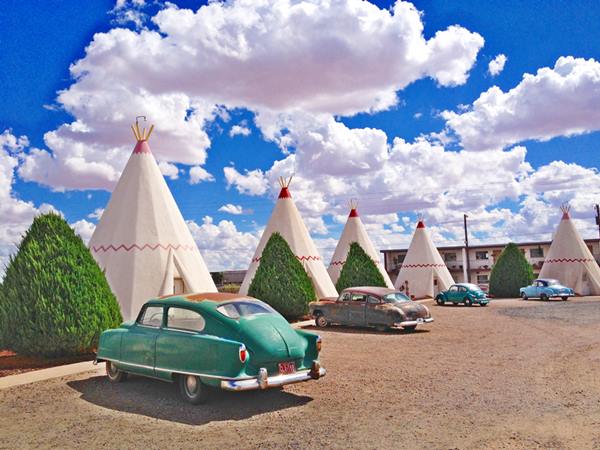
Munger Moss Motel Neon Sign, Lebanon MO
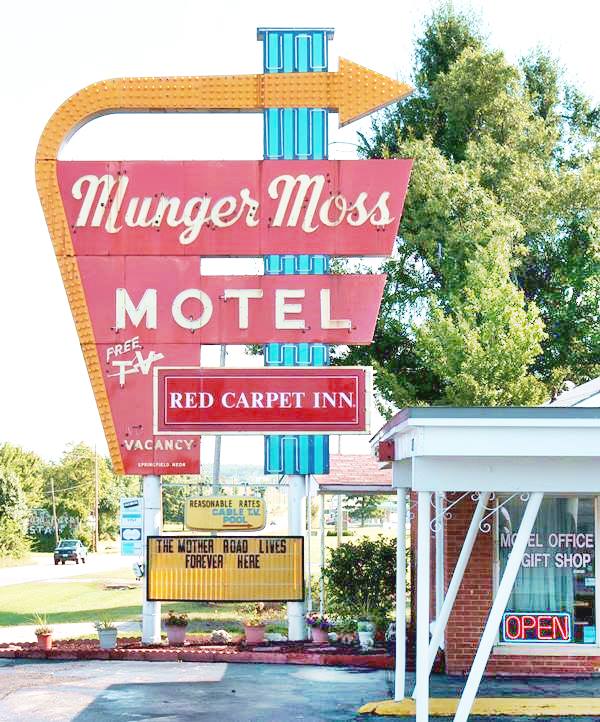
5. Feel the Vast Size and Diversity of America
America is enormous and has a diverse cultural and ethnical mix, it is really a "Melting Pot".
Its heritage combines European immigrants, Native Americans, Black or African Americans, Asians and Hispanics making it one of the most complex cultural identities in the world.
Route 66 takes you on a trip along and across this blend of cultures.
Cultural Diversity along Route 66
Route 66 begins and ends in the US' second and third largest Metropolitan areas: Los Angeles and Chicago (Number one is New York just in case you were wondering).
These gigantic urban and suburban sprawls concentrate 22.8 Million people!
Both cities and their Metro areas are a cross section of America: Los Angeles is the home to the largest population of Vietnamese outside of Vietnam.
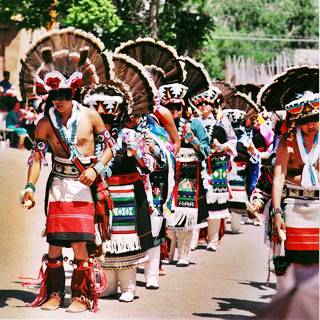
Pueblo people at Ohkay Owingeh. Carptrash
In the Southwest, the Native Americans are present along Route 66: The Pueblo people settlements in New Mexico preserve their ancient traditions ( Santo Domingo or Kewa Pueblo, Acoma Pueblo, Zuni Pueblo, Laguna Pueblo, Pecos Pueblo, just to mention a few).
You will cross the Navajo territory in western New Mexico and eastern Arizona: with 27,000 sq.mi. (70.000 km2) it is the largest Indian reservation in the United States; it is the size of Ireland!
Jut north of Winslow AZ there is a Hopi Reservation, and on Historic Route 66 Peach Springs AZ is in the Hualapai Reservation.
You can experience the Czech community in Yukon "the Czech Capital of Oklahoma", and taste wines with an Italian touch in Rosati MO, the Italian settlement in the Ozarks foothills.
in Los Angeles, visit the famous Chinatown.
Natural Scenic Beauty
Route 66 takes you to some of the most beautiful places in America.

The scale of America can only be percieved when you drive across it. And US highway 66 crosses eight states! Each with its own stunning landscapes and scenery.
Along Route 66 you dissect the continent starting in the Great Lakes, crossing the prairies and corn fields in Illinois and reaching the Mississippi River.
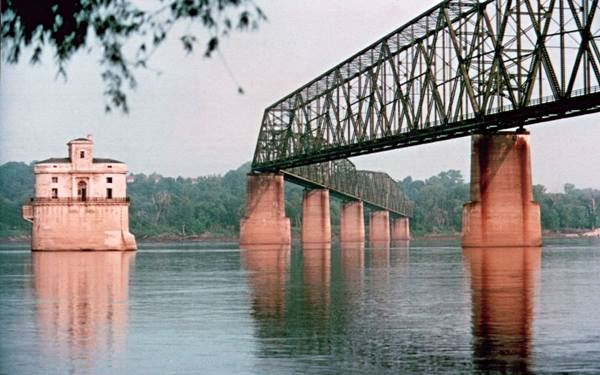
Almost 0.6 mile wide in St. Louis (1 km) the Mississippi is one of the longest rivers in the whole World.
Then come the rolling forested Ozark hills in Missouri, the lead and tin mines of the "Tri state region" in Kansas, Missouri and Oklahoma.
The scenery changes, woods thin out and the open plains of Oklahoma and Texas appear. This is the "oil region".
Ahead lies the drier high plains in New Mexico, the forested Sandia Mountains, volcanos in Albuquerque, lava flows in Grants and the Continental Divide.
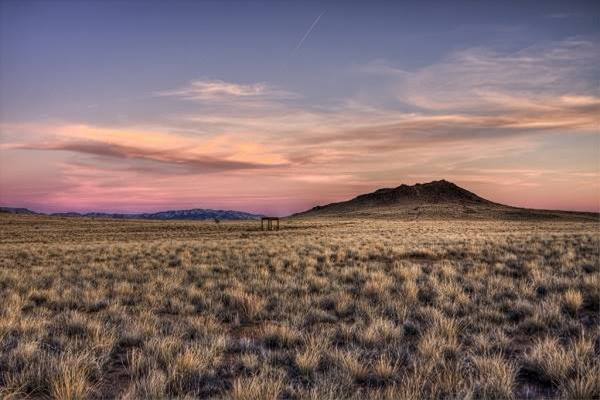
Route 66 enters the arid eastern parts of Arizona with a meteor crater impact in Arizona (3⁄4 of a mile wide; 1,200 m) followed by the volcanic San Francisco Mountain range (12,633 feet - 3.853 m) with pine forests in Williams and Flagstsaff.
Petrified Forest and the Grand Canyon National Parks are the area's best known natural attractions.
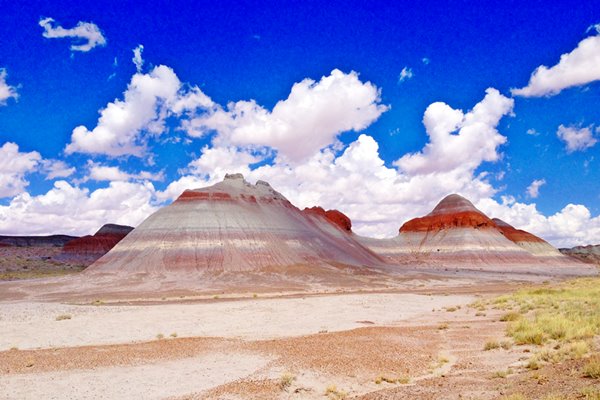
Yet another mountain range and the mining town of Oatman, the Colorado River and California with its Mojave desert, Amboy volcano and St. Andreas fault in Cajón Pass.
The vast suburbia of Los Angeles and the Pacific Ocean in Santa Monica.
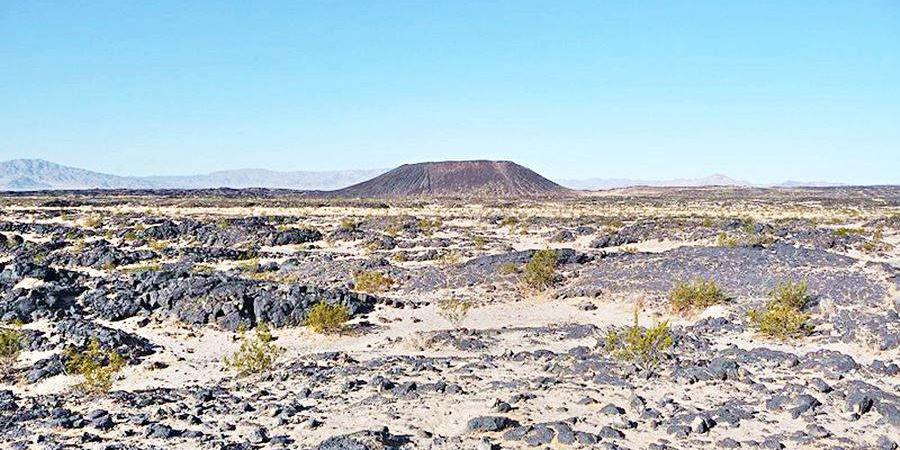
Route 66 has almost evertything: Ghost Towns, Prisoner of War camps, the oldest church in America, Civil War battlefields, Bonnie and Clyde's hideout, the first freeway in the west (in Los Angeles), Hollywood's "Walk of Fame", the first McDonald's... you name it, its there, on Route 66.
It is about the Journey not the Destination
Route 66 is not really about the road
A road trip along Route 66 is not really about the road itself, it is embarking on a journey of discovery.
The Mother Road embodies freedom, adventure and the search of new opportunities.
It represents the essence of the American dream: we shape our lives and our success with our free choices.
The young and old Americans of yore, would hop into their cars, hit the open highways and head west. Their corageous spirit and their optimism are attitudes and values seldom found nowadays.
When we take to the road on our nostalgic journey along Route 66, we also take a journey into these deep feelings; which is also a journey of self discovery.
The phrase "Life is a Journey not a destination", attributed to Ralph Waldo Emerson encompasses what a Route 66 road trip is all about.
Actually Emerson's thought was far deeper; he wrote:
To finish the moment, to find the journey’s end in every step of the road, to live the greatest number of good hours, is wisdom. Ralph Waldo Emerson
A Trip into Nostalgia
Groups across the US have been working hard to preserve America's Main Street. They have fought for decades to keep it alive (ever since the Interstate network rendered it definitely obsolete back in 1985), and are succeeding.
The National Park Service manages the Route 66 Corridor Preservation Program which combines federal funds with private support to protect the highway. This is clewar proof that Route 66 is a valuable part of American culture and history.
But it isn't about the Road or the Scenery
Nowadays Route 66 is like a time capsule, and future archaeologists and sociologists will thank us for preserving it!
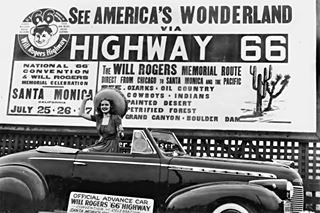
1940s promotion of "Highway 66" and its attractions
And we should bear in mind that those pioneers who drove along Route 66 did so because it was the quickest and shortest way to reach Southern California, not because it was a scenic highway.
And those vintage motels, diners and gas stations sprung up to cater to them; they didn't intend to become part of history.
As the billboard behind the woman in the image says:
SEE AMERICA'S WONDERLAND
VIA
HIGHWAY 66
THE WILL ROGERS MEMORIAL ROUTE
DIRECT FROM CHICAGO TO SANTA MONICA AND THE PACIFIC
SEE. OZARKS. OIL COUNTRY
COWBOYS. INDIANS
PAINTED DESERT
PETRIFIED FOREST
GRAND CANYON . BOULDER DAM
Sights that may sound naive to our sophisticated point of view, but which are still there, waiting for us to discover, America's Wonderland on Highway 66!
So don't doubt it, plan your Route 66 Road Trip; you won't regret it.
>> Did you know that you can Drive the whole of Route 66 in 7 days?
Some sponsored content
> > Book your Hotel in Winslow Arizona

Credits
Banner image: Hackberry General Store, Hackberry, Arizona by Perla Eichenblat
Experience Essays. Prose. Ralph Waldo Emerson, 1841


